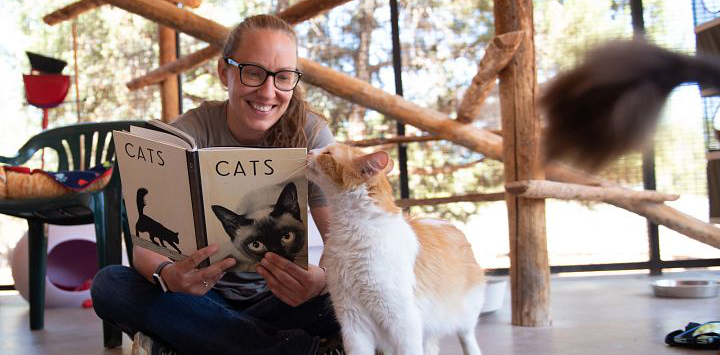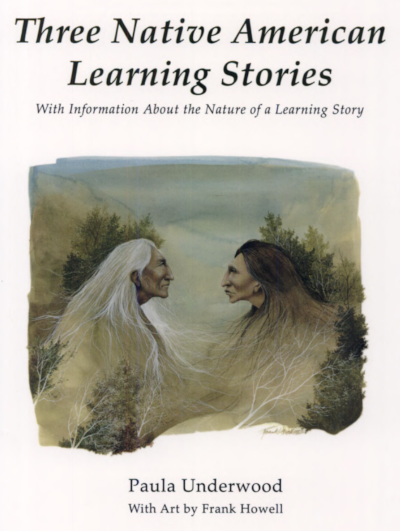
Harnessing the Power of Story to Benefit your Bottom Line
Stories are everywhere. Just in the first few hours of my day, I heard a story on National Public Radio about the state of the economy; saw a Facebook video about a tiny puppy trying to befriend adult dogs 10 times his size; and learned how the web tool Trello could help me get more organized thanks to experiences shared by my coworkers. I even told a friend the story of my experience volunteering as a Saturday tour guide for a wildlife sanctuary.
The first three instances are examples of how stories educate, entertain and help us to understand larger concepts through specific examples. The final instance taps into how story can help an organization gain vital supporters and funders.
Every week, I get a chance to share charming, funny, sobering stories about the mountain lions, coyotes and black bears who must spend the rest of their lives in captivity because they are unable to return to the wild for various reasons. Each week, I hope those powerful stories are recruiting supporters of the mission and motivating people to donate to our work. It’s this last goal that every shelter and rescue out there should be considering, especially as we enter the giving season.
Find—and Fine-tune—Your Story
Throw a dart and you can hit a good story from your work saving lives. Chances are you can readily recall at least one tale of a happy ending your organization made possible. But if you are struggling with how to craft one of those tales into a succinct, effective piece to use in direct mail, on social media, in your annual report or even in person, consider these basic elements:
- Find an emotional connection. Demonstrate what is special/unique about the character and his/her situation and use it to hook the audience right upfront. Draw them into the story by giving them a way to empathize or sympathize with the situation.
- Filter out non-essential details. It can take several revisions and sets of eyes to whittle a story down to its key elements, but it’s important to do so. Think of the last time your neighbor droned on and on about something that happened to them recently and how much your mind wandered. Your story should be crafted to grab someone’s attention, hold it, give them a way to get involved and end on a high note.
- Always keep your purpose in mind. Don’t wander off into unrelated information like your neighbor does. If you want to impress upon your audience that your organization can give new life to dogs with devastating orthopedic injuries by fitting them with wheelchairs, then do that with one compelling story.
- Tailor your stories to your intended audience. If you are looking for more foster homes, then share a story from one of your amazing foster homes. If you need funds (and who doesn’t?), talk about how a $5,000 donation made it possible to spay/neuter 75 community cats.
Senior development strategist of national shelter embed Trish Tolbert also points out that, while statistics can play an important role in your storytelling, you probably don’t want to lead with them.
 “First you must get someone’s attention, and it’s much harder to engage people with numbers as opposed to telling one story that represents both the problem and the solution,” she says. “There are a lot of donors who are more heart-driven than head-driven. Hone in on an engaging story that represents what you’re trying to work on, then have a few good stats in your hip pocket to show the scope and scale.”
“First you must get someone’s attention, and it’s much harder to engage people with numbers as opposed to telling one story that represents both the problem and the solution,” she says. “There are a lot of donors who are more heart-driven than head-driven. Hone in on an engaging story that represents what you’re trying to work on, then have a few good stats in your hip pocket to show the scope and scale.”
Use Story to Demonstrate Values
Consider how your story exemplifies a theme. A cat reunited with her family after a decade of being lost demonstrates the importance of microchips. Providing vet care and food for a person experiencing homelessness speaks to the power of respecting the human-animal bond.
If there are values you want to convey, look for a story in the world that represents yours. When Trish worked for The Nature Conservancy, she often told Paula Underwood’s story Who Speaks for Wolf, which tells the tale of how an indigenous tribe decided that the competition for game meant they needed to eliminate the wolves sharing their valley.
“As the tribe discussed the decision, the elder initially said nothing. Then he slowly looked around and said, ‘Who here speaks for Wolf? Because Wolf had been there first yet had no say in this decision,” Trish says. “It really spoke to the fact that, at our best, The Nature Conservancy would speak for Wolf. We used it to orient people to who we were, and that we did not consider ourselves to be above the animals who share this planet.”
Show What’s in it for Them
“I often cite Dr. Maya Angelou’s quote ‘I've learned that people will forget what you said, people will forget what you did, but people will never forget how you made them feel’,” Trish says. “Right now, when I talk to people in my home state, my hook is, ‘Did you know that more homeless pets are dying unnecessarily in North Carolina than any state other than Texas or California?’ No one walks away from that.
“Hopefully, it also leads to the question, ‘Why is that?’ You have to get to why that is before you can get to what can we do about it. That’s the progression I observe in human beings.”
Always look for the right opportunity for a donor to make the greatest difference. That means stop talking simply about need and instead, translate it into a chance for people to make a difference in the world.
“If you tell a story and there is a hero, you want them to be able to imagine themselves in that hero role,” she says. “Being part of the solution drives involvement and it drives giving.”
As a Network partner, you are not speaking for Wolf in your work. Or mountain lions. But you do speak for dogs and cats in need in this country – not just the 347,000 unnecessarily dying because they can’t find homes, but the many who are saved thanks to your hard work.
And if you take the time to choose your stories carefully and put them out in the public consciousness, you won’t just speak for animals, you’ll give them an opportunity to speak for themselves.
Once you decide what story best represents your organization, check out our resources on how to use it to raise funds.

Liz Finch
Senior Writer
Best Friends Network
If you enjoyed this program spotlight, you can find our complete catalog of spotlights here.